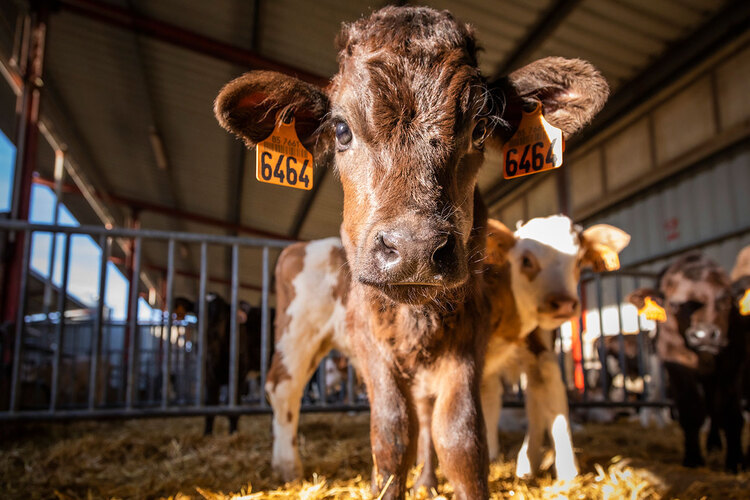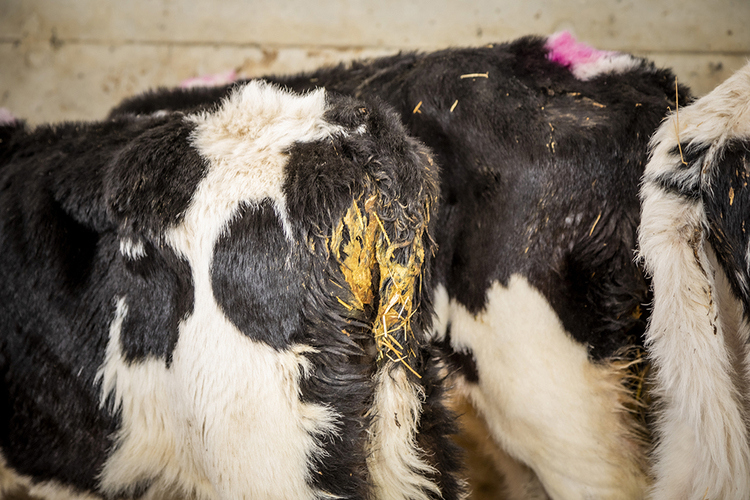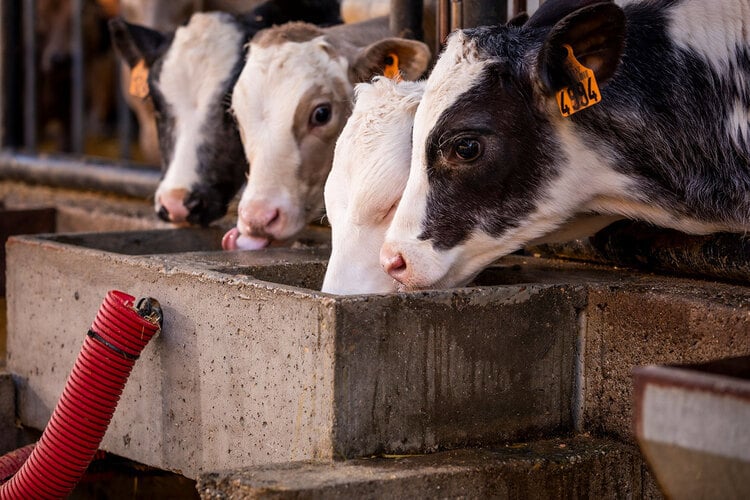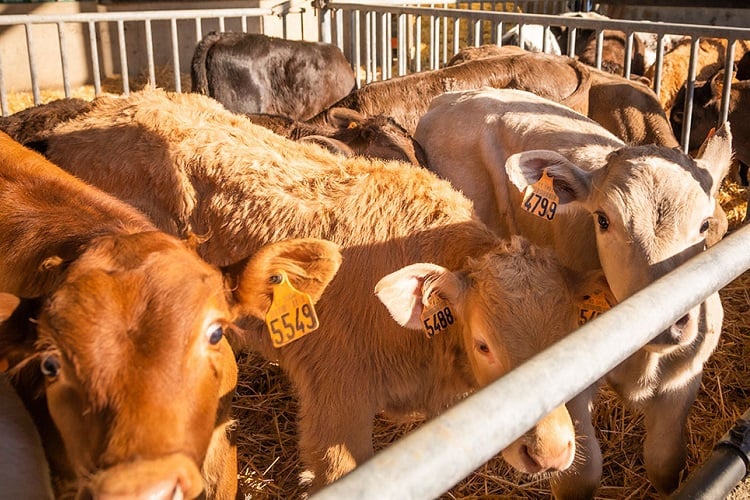
- LifeStart
- Lifestart themes
- Lactobalance
Key takeaways from the research
- Faecal scores between 0 and 3 of 640 faecal samples from dairy calves correlated well with faecal dry matter

Faecal dry matter is a measure for severity of diarrhoea of dairy calves
One of the parameters to assess the severity of calf diarrhoea is the faecal dry matter (DM). It requires laboratory analysis to measure the DM % of a faecal sample. An alternative often used is a faecal scoring system. Renaud and others[1] studied 640 faecal samples to evaluate the accuracy of faecal consistency scoring as a measure of fecal dry matter (DM) in dairy calves.
Materials and methods
The study was conducted at a commercial grain-fed veal facility in southwestern Ontario. Faecal samples from 160 calves arriving at the facility were included in the study. Fecal consistency scores were evaluated once daily in the first 28 days after arrival. Evaluation took place immediately before the first milk feeding at 7.00 AM, using a 4-level scoring scale: 0 = normal, 1 = soft, 2 = runny and 3 = watery. Fecal samples were collected from all calves via rectal palpation on days 1, 7, 14 and 21 at 9.00 AM for determination of faecal DM.
Results
Faecal scores and faecal dry matter percentages of the 640 samples are presented in Table 1.
Faecal score |
Number of samples |
Faecal DM |
| 0 | 382 (61.6%) | 25.1 ± 8.2% |
| 1 | 121 (19.5%) | 21.8 ± 8.4% |
| 2 | 85 (13.7%) | 16.0 ± 11.1% |
| 3 | 32 (5.2%) | 10.7 ± 6.9% |
Table 1, Faecal consistency score and faecal dry matter of 640 samples taken from veal calves during the first 21 days after arrival on the farm.
Conclusion
The study confirmed that using observational faecal consistency scoring can accurately predict diarrhoea or a decline in faecal DM.
References
[1] Renaud, D.L, Buss, L, Wilms, J.N, and M. A. Steele, 2020, Is fecal consistency scoring an accurate measure of fecal dry matter in dairy calves?, J. Dairy Sci, 103.






